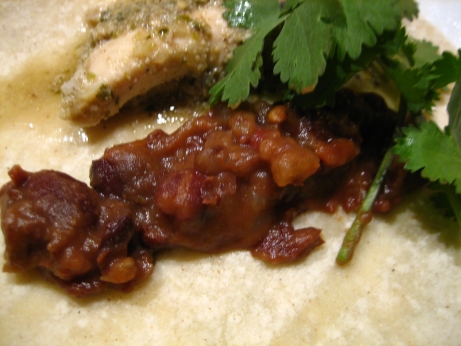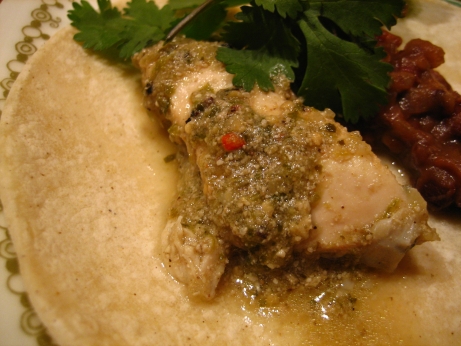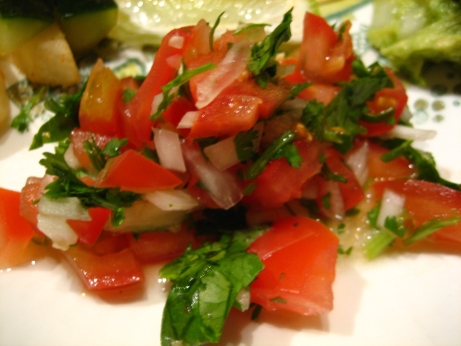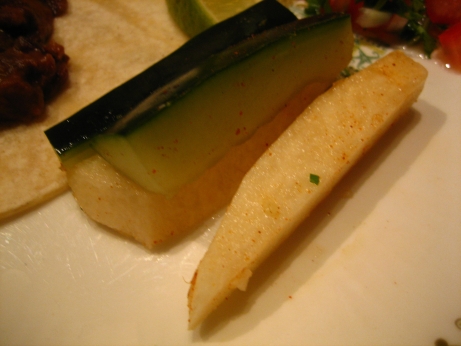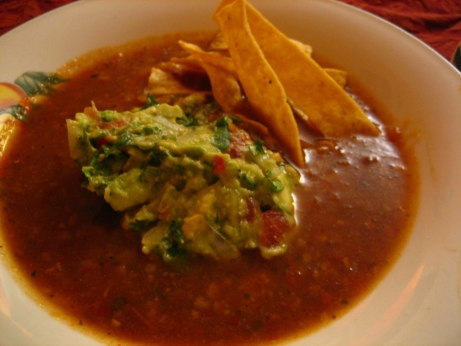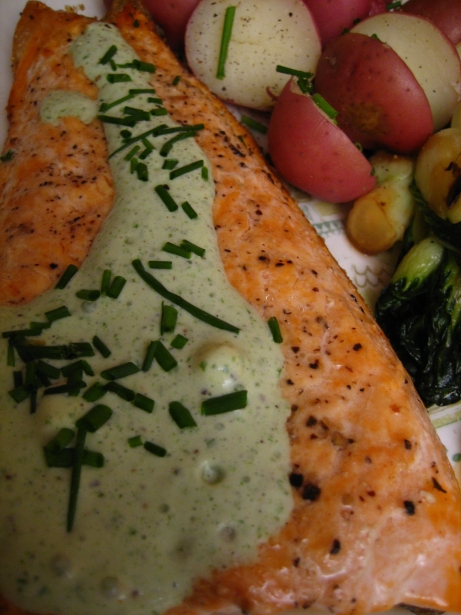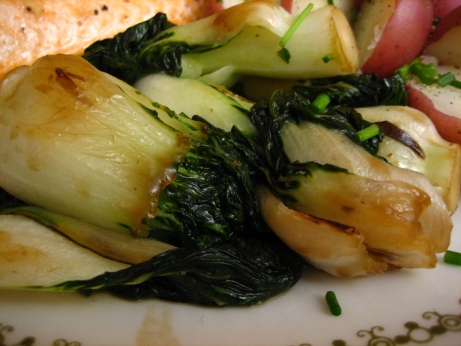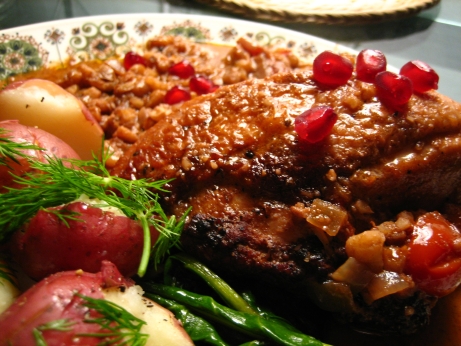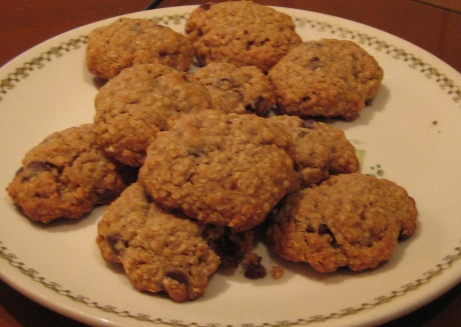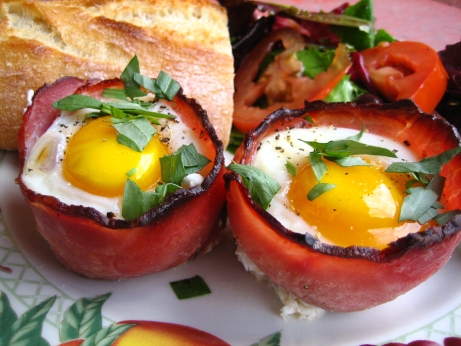
The eggs are really pretty, taste great, and come in manageable individual sized portions. It’s not really practical to do fried eggs for a crowd, you end up spending all your time at the stove, and the toast gets cold. The solution is often scrambled, or poached eggs. Scrambled are nice, but a bit boring, and I really like having a yolk to dip into. Poached are great, and as my poaching skills improve I appreciate it more and more. I’m always worried about getting the eggs out of the pan, nicely drained, and onto the plate without breaking at least one of them though.
This type of dish is a nice option for a big brunch. Slices of ham are fitted into muffin cups, and filled with a mixture of sautéed mushrooms and shallots, fresh tarragon, and crème fraîche. Each cup is topped with an egg, and then popped in the oven at 400 degrees until the whites are set. They’re excellent little self-contained dishes that are easy to serve, and most of the work can be done ahead. They’re easy to make, the presentation is impressive, and quite charming.
I was a big fan of the flavours at work here. The ham crisped up and showed off its bacony side, which paired well with the classic mushroom tarragon combination. The crème fraîche added a bit of richness and luxury, and the egg was a none to subtle reminder that this was a breakfast dish.
Despite my enthusiasm, the recipe had some technical problems. When buying the ham for this recipe it’s important to get slices without any holes, otherwise the filling will leak out. I decided that thicker slices should stay together better, but I failed to consider that they’re less malleable. I had trouble getting them into the egg cups, and ended up cracking some of them. In the end, a lot of the filling did run out of them. This isn’t really the recipe’s fault, after all it did warn me. But your ham should be neither too thick nor too thin, and the more uniform it is the better.
The real problem with the recipe came in the baking of the eggs. I put them in the oven for the recommended 15 minutes, but the whites weren’t even close to being set. It took an extra 10 minutes for them to set up. Unfortunately the yolks were fully set by that point, which was a real letdown. It’s possible that the broiler element came on at some point during the eggs’ cooking and applied too much direct heat from the top. Since you don’t really care if the eggs steam a bit, you could probably cover the muffin tin in the oven.
I’m not sure where I went wrong with the eggs, Teena at the other gourmet project made these recently. She didn’t seem to like them nearly as much as I did, but the eggs in her photo look like they have set whites and runny yolks. I may have messed up somewhere along the line.
These eggs looked and tasted great, and were really easy to make. Mine didn’t work out as well as they could have, but they were still delicious. Tarragon is a prominent flavour here, and not one you often find in breakfast dishes. For me that was a welcome surprise, I’m always happy to eat more tarragon. It doesn’t really jump to mind when you think of flavours to pair with coffee and orange juice though. I think these eggs work best as part of a less breakfasty brunch. I served them with baguette and a green salad, which worked really well. I’m excited to try these again, if I can find a way to maintain my ham’s structural containment and sort the eggs out, I think this dish could be a real winner.
